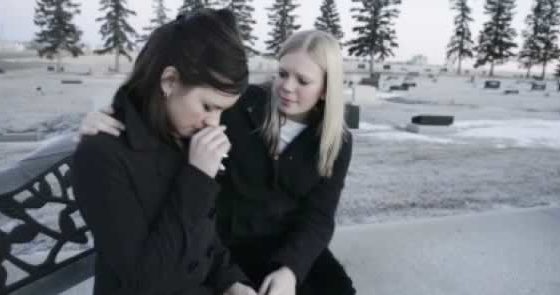“The amount of conflict in a marriage only determines the speed at which the marriage is moving toward greatness or toward destruction. If you want to sit still in your marriage, rule out all conflict. If you want your marriage to crash and burn, let the conflict rage but refuse to learn the skills necessary for managing it. Well-managed conflict is like a stairway that can lead you to higher and higher levels of marital greatness.” Neil Clark Warren 1
“A word out of your mouth may seem of no account, but it can accomplish nearly anything — or destroy it! It only takes a spark, remember, to set off a forest fire. A careless or wrongly placed word out of your mouth can do that.” The Bible, James 3:5-6a (The Message)
You Could Learn a Lot From a Forest Fire (Smokey the Bear)
One of my favorite memories as a child was a family vacation to Yellowstone National Park in Wyoming. I was fascinated by the vast blend of wilderness, mountains, and hot water geysers. But when in 1997 I had the opportunity to take my own children to see Yellowstone, it didn’t look quite the same. Nearly one-third of the park lay burnt from several small forest fires that, in 1988, merged into five large complex fires claiming a full 793,000 acres of trees. Battling the fire required 25,000 firefighters, as many as 9000 at one time, and cost US tax payers $120 million. But how did the fires start and why did they burn out of control? After all, wildfires are common in Yellowstone (an average of 24 fires is ignited by lightening alone) but rarely burn as much as 100 acres — combined. So what were the circumstances that lead to a significant portion of the park burning in 1988? And more importantly, since the most distinguishable difference between high-satisfaction couple relationships in stepfamilies and low-quality relationships is their ability to resolve their differences, what lessons can you learn about managing the fires of marital conflict from the fires of nature? 2
When Drought Leads to Wildfire
All relationships go through periods of drought. But severe drought sets up a relationship for the fires of conflict. Despite the fact that Yellowstone National Park experienced wetter-than average summers from 1982-1987 and relatively low fire activity, an overall 10-year pattern of dryness contributed to a significant build-up of forest debris. This would later prove tragic. During the spring of 1988 Yellowstone had above average rainfall. But by June, the park again experienced a severe drought and the summer months turned out to be the driest in the park’s recorded history. Prior to 1988 Yellowstone’s wildland fire management plan followed the generally accepted wisdom of allowing naturally-ignited fires to put themselves out, which they did quite naturally once the fallen debris in the immediate area had burned. But months of drought combined with a decade of build-up, left the park full of debris and ripe for wildfire. In July of 1988 the National Park Service decided to suppress all fires. But the decision came too late. Within a week, small fires — that under normal circumstances would have been quite manageable — burst out of control and eventually encompassed more than 99,000 acres of God’s wondrous creation 3.
Sounds like a lot of marriages. Investing in marriage means keeping it “wet” with the refreshing waters of fun, time, and consideration (see chapter six on the importance of fun in marriage). Every marriage begins with such efforts and may even have periods of “higher-than normal rainfall”. But stop investing in your marriage and you’ll begin to build up debris that is capable of taking a natural occurring fire — that would normally run it’s course and dissipate — and turn it into a wildfire than can destroy a relationship.
Healthy stepcouples have conflict, but they make having fun and romance a strategic part of their conflict management plan. Enjoying each other makes times of conflict easier to handle because your attitude toward your partner and the problem is one of collaboration. Having a loving relationship makes you more willing to find ways of resolving conflict. But a relationship plagued by months and years of debris will find that small fires can easily rage out of control.
Conflict — A Useful Burn
God’s design to care for forests includes occasional burns that decrease the level of debris. If ecologists had understood this earlier the Yellowstone wildfire of 1988 might have been prevented. The conditions leading up to that destructive fire really began in the 1700’s when early explorers, who believed that fire suppression was good stewardship, put out all blazes as quickly as possible. Throughout the 20th century, park managers continued to view fire as a destructive force, one to be mastered and controlled. But by the 1940’s, ecologists began to realize that fire was a primary agent of change in many ecosystems. In other words, they realized it might be useful and healthy for the forest. In the 1950s and 1960s, national parks begin to experiment with controlled burns. Later in the 1970s, fire management plans allowed lightening-caused fires to burn and reduce fuel accumulations of unwanted debris.
Healthy marriages are comprised of couples who understand that the fires of conflict — managed in a constructive manner — are actually useful to the marriage. They understand what years of research has confirmed: conflict helps to weed-out the unhealthy or weak aspects of marriage and replace them with a stronger marital alliance and growing sense of security. 4 By contrast, couples who automatically suppress conflict — as did the early explorers of America’s forests — discover they inadvertently build up unhealthy, decaying debris in their marriage. And that, in turn, proves deadly later on when a build-up of resentment proves unmanageable. Indeed, the number one predictor of divorce is a couple who habitually avoids conflict 5.
Conflict in your marriage must be managed, but not completely suppressed. When handled with cooperation, conflict can actually lead to greater levels of intimacy which was clearly demonstrated in our research. Couples in high-quality relationships resolve their differences, demonstrate important listening and understanding skills, and have unity in how they tackle disagreements. In stark contrast, unhappy and dissatisfied couples stock pile the debries in their relationship because they avoid issues, invalidate one another concerns, don’t feel heard, turn small problems into big ones, and can’t even agree on how to disagree.
We should add here that a related strength we found in high-quality couple relationships, called couple flexibility, contributes to the ability to resolve conflict. Flexible couples demonstrate creativity in problem solving, compromise as they deal with each other, and are adaptable, able to change when the situation calls for it. This feeds the couple’s ability to find solutions to the complex stepfamily problems that arise.
A woman named Brenda wrote us about her stepfamily of four years; she was about to give up. She had two “ours” babies, ages 1 and 3, and was stepmother to a 11 year-old stepson, Josh, who was spoiled by his mother and resentful of his stepmother. Brenda wrote about all the influences from Josh’s home and her frustration with not having much control. She and her husband disagreed on how to “play their game” and found themselves divided frequently. We encouraged Brenda and her husband to focus on what they could control and to very intentionally sprinkle their relationship with fun and energy over the next few months. We also talked about searching for compromise and creative solutions to their dilemmas but most of all, we encouraged Brenda personally to find a way to adapt to her circumstances and accept what she couldn’t control. It worked. Six months later Brenda wrote us again noting that she had found a way to “let go of control” regarding Josh and his mother. This had empowered her to be more cooperative with her husband when they discussed what they could control. The net result was a more flexible Brenda and a more collaborative marriage.
Prescribed Fires — Utilizing Controlled Burns
In their book Fighting For Your Marriage, authors Howard Markman, Scott Stanley, and Susan Bloomberg suggest that couples should have regular “business meetings” to proactively discuss issues or problems in their marriage. This is what we might call a “controlled burn.”
One of the positive outcomes of the 1988 Yellowstone forest tragedy was a change in fire management policy and greater awareness of potential fire activity throughout America’s national parks. A number of policies were modified, but one significant change opened the door for a more aggressive controlled burns program in the nation’s forests and parks. The unique vegetation in Yellowstone exempted the park from this change, but many forests and national parks increased the number of intentionally set fires on a regular basis to decrease hazardous fire-fuel debris. Interestingly enough, parks implementing this strategy have discovered increased fire fighter safety, greater structural control when a wildfire does break out, and a greater confidence that natural burns won’t explode out of control.
We highly recommend that you, too, have controlled burns in your marriage. Sitting down weekly (or some other regular basis) to proactively discuss family decisions, parenting dilemmas, financial concerns, and the status of your stepfamily’s growth is a healthy way of reducing the potential of hazardous fires. In addition, we believe doing so will increase “fire fighter” safety in your marriage (protecting you from becoming trapped by wildfire) and increase confidence in your ability to lead and manage your stepfamily.
Managing the fires of conflict and proactively igniting controlled burns requires skill. It also requires knowledge of what creates the fire or conflict in the first place.
Avoiding the Fire Triangle
Any good fire fighter knows that it takes three things for fire to keep burning: heat, fuel, oxygen. Remove any of the three and the fire goes out. In couple conflict heat describes an issue over which the couple disagrees; fuel is the process of how the couple interacts; and oxygen is the negative feelings each person feels that drives how they respond to the other. Let’s examine each of these.
Heat. Every couple has disagreements. But when disagreements escalate into “issues” there is heat. Ned, for example, loved to buy flowers for his wife, Amy. He enjoyed surprising her with romance and never thought twice about the money. In fact, he’d always heard that all women love flowers and therefore assumed that money was no object when showering his wife with gifts. That’s why he couldn’t understand why his wife complained every so often. She appreciated his thoughtfulness, but her frugal nature couldn’t help but wonder about all the things they could do with the money he spent on flowers. Obviously, Ned and Amy had differing values about money that brought about heat in their relationship. Ned valued romancing his wife; Amy valued saving for family needs. They had argued about this before, but at this point, no one was listening. And, there was more.
Fuel. Even though Amy appreciated Ned’s thoughtfulness, the way she responded to him didn’t communicate that at all. Once after being presented with a dozen roses she immediately pointed her finger at Ned and “scolded” him with her eyes. Ned, feeling unappreciated and confused, jabbed back accusing her of being “too tight” with money. As frustrations escalated, and each positioned to “make their point heard,” the two found themselves arguing over a multitude of issues that had nothing to do with the issue at hand. But there was another element of this fire triangle that lay beneath the surface.
Oxygen. Below each of Ned and Amy’s anger Ned’s frustration and anger were deeper, more menacing emotions. Ned felt hurt by Amy’s rejection of his generous gifts and he feared that ultimately she didn’t really like him. And boy was that a familiar feeling. During his first marriage, Ned’s former wife frequently made her disapproval of Ned known. As the marriage deteriorated, she eventually drifted in her commitment and ultimately left the marriage. This left an indelible mark on Ned’s heart and created what in I called in my first book The Smart Stepfamily The Ghost of Marriage Past. These ghosts are deep bruises on a person’s heart that whenever bumped resurrect overwhelming emotions and often relationally destructive behaviors. Ned’s ghost reminded him of how awful rejection is and led him to fear another divorce. The only solution — according to the ghost — was to first shower his wife with gifts so that she would feel cherished and return his love. When that didn’t work and Amy complained, the ghost activated Ned’s fears leading him to “return fire,” hurting her with criticism as he had been hurt. The ghost somehow convinced him that arguing with someone who rejects you can somehow make them accept you (and there’s not much chance of that happening). In addition, blaming her for being too tight with money allowed Ned to distance himself from Amy protecting him from her seeming rejection. “If she can’t reach me, then I can’t be hurt again,” Ned used to think to himself. Ironically, the oxygen Ned was breathing led him to be angry, reactive, fearful, and distancing — all of which were actually bringing about the very rejection he feared.
Putting Out the Fire
In order to stop the fires of conflict from raging in their marriage, Ned and Amy must squelch part of the fire triangle of heat, fuel, and oxygen. Ned, for example, might become a “ghost buster,” coming to terms with the difficult bruises from his past that lead him to be fearful and then reactive to Amy’s value about money. Amy could recognize that when she “scolded” Ned with her eyes or tone of voice, it made him feel very small and child-like. Doing so made it very unlikely that Ned would appreciate her need to save money and more likely that she would feel ignored. And both of them could stand to learn a process of resolving conflict that would help them manage the negative emotions that arise from time to time in every couple’s relationship. Then, and only then, will ghosts be put to rest and intimacy begin to grow.
End Notes:
[1] Warren, Neil Clark (1995). The Triumphant Marriage. Colorado Springs, CO.: Focus on the Family Publishing, p. 105.
[2] Special thanks go to Phil Perkins, Fire Management Officer, Yellowstone National Park for his contributions to this chapter.
[3] Information on the Yellowstone wildfire of 1988
[4] Gottman, J. (1994). Why Marriages Succeed or Fail. New York: Simon & Schuster.
[5] Sollee, Diane. What’s the Number One Predictor of Divorce? Available online at
Copyright © 2006 Ron Deal. All rights reserved.
Ron is a Licensed Marriage and Family Therapist, a Certified Family Life Educator, a Certified Family Wellness instructor, and a member of the Stepfamily Association of America’s Advisory Council.
Ron’s media appearances to address the needs of stepfamilies include radio programs such as “FamilyLife Today” with Dennis Rainey, “Life Talk” with AACC president Dr. Tim Clinton, and the national TV program “Time for Hope.” He writes feature family and ministry articles for a number of publications and online magazines.
Ron has spoken at the National Conference on Stepfamilies and both the Utah and Arkansas Governors’ conferences on the family. In addition, Ron is featured as a family life specialist on a weekly TV news segment entitled the “Home Builder Series.” He and his wife, Nan, have three boys.
[schemaapprating]


 Ron Deal is a marriage and family author, conference speaker, and therapist. He is founder and president of Smart Stepfamilies™ and director of FamilyLife Blended™, the ministry initiative of FamilyLife® to stepfamilies.
Ron Deal is a marriage and family author, conference speaker, and therapist. He is founder and president of Smart Stepfamilies™ and director of FamilyLife Blended™, the ministry initiative of FamilyLife® to stepfamilies.








